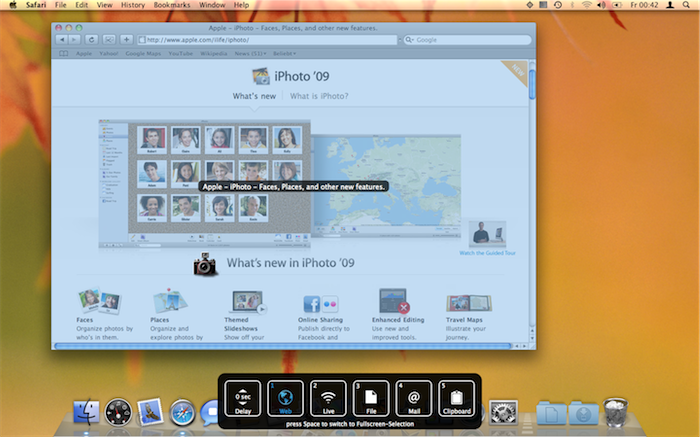CuteClips 3 has been out since last May now and I’ve still had one big thing to add: Localization. Even though I’ve had the localized Nibs and strings files around, I didn’t find time yet to release a localized version. The long know problem was again that features were added I needed to update all those Nibs again.
After reading Pimp My Code 17: Lost in Translation I knew that this was gonna be the way to go for CuteClip’s Localization. I’ve finally had time to implement things. However, it was a bit messy and didn’t work out of the box as I would have expected it. So here’s a small Q/A of the questions that I came up with during the change.
Which strings go to which file?
Strings from the application that are used like NSLocalizedString(“key”,”comment”); go to Localizable.strings. Same as usual. Strings of Nibs however go into NibName.strings.
I.e: MainMenu.nib or MainMenu.xib has its strings in MainMenu.strings.
CuteClips uses plugins a bundles a lot. How are those Nibs looked up?
The lookup-change in DMLocalizedNibBundle.m is implemented on class-side in NSBundle. Every instance call is sent to [NSBundle mainBundle]. So all strings-files need to go to the MainBundle’s Resources folder.
If your plugins have a MainMenu.xib then there’s no separate file. If your plugin has a different name, like in CuteClips, you end up have multiple strings files.
I.e: Here i’ve got Localizable.strings, MainMenu.strings and OldUI.strings
How the heck do I convert my existing localized Nibs to strings files?
That’s a bit tricky! First you need to get the strings out of the Nib, which can easily done by using ibtool:
ibtool —generate-stringsfile MainMenu.strings MainMenu.nib
Not too difficult, but the devil is in the details: If that was a german Nib and you got a button called “Abbrechen” you wouldn’t find a line like “Cancel” = “Abbrechen”; in the strings-file. Instead you’ll have “Abbrechen” = “Abbrechen”. That doesn’t help much when your application tries to translate “Cancel” as it wouln’t find the key. Luckily that’s not the only information that you can find in the strings-file. Each translation also has a comment next to it that contains an ObjectId. Using this ObjectId you can use the english MainMenu.strings to convert the keys of the german MainMenu.strings. That doesn’t work for all translations though, so you need to fix the files by hand as well.
Another problem here is that many translations appear multiple times, so you might want to get rid of the clones.
I’ve written a little Smalltalk tool in VisualWorks but it should work in any Smalltalk Environment. Usage is simple:
to convert the translation-keys to english:
Converter new convert: '/Path/To/Project/German.lproj'
to filter out the clones:
Converter new filter: '/Path/To/Project/German.lproj'
The tool will create *.fixed.strings files by default.
You can load the tool at:TranslationScanner
I think that’s it.
One thing that i’d like to add: One of my resolutions for this year is finally joining Twitter. I did so on the last day of 2009 and my nick is _karsten_.
Happy New Year!
Karsten
